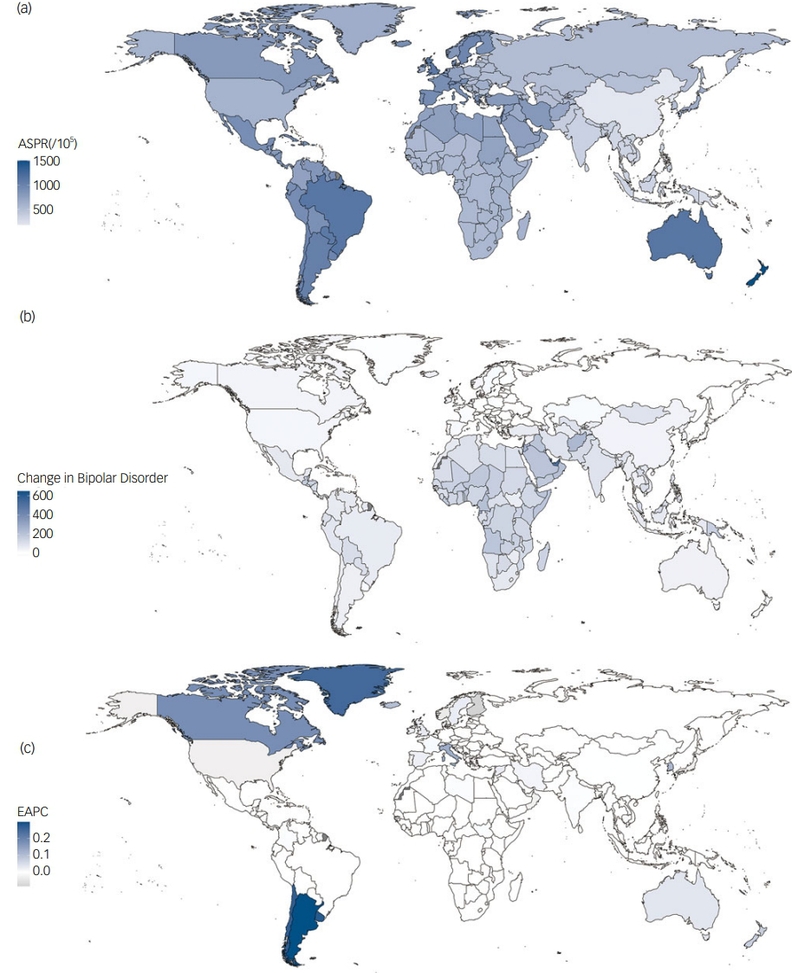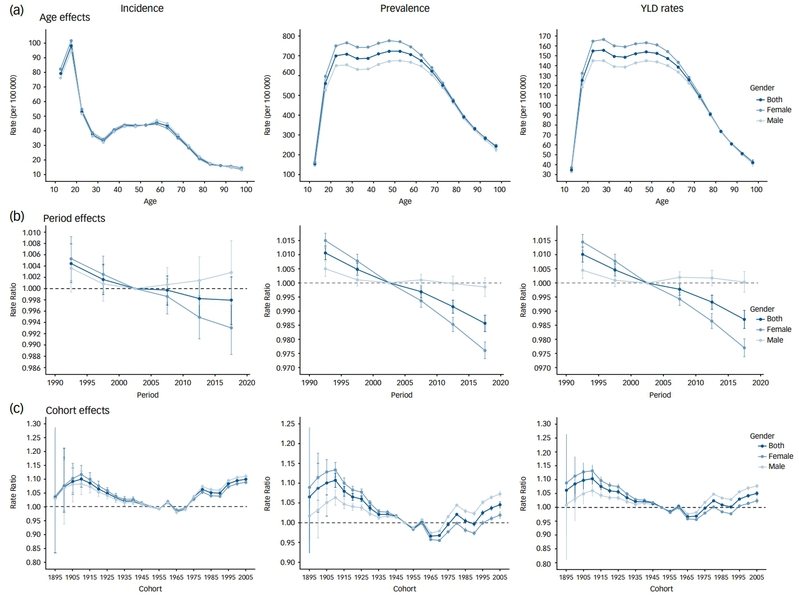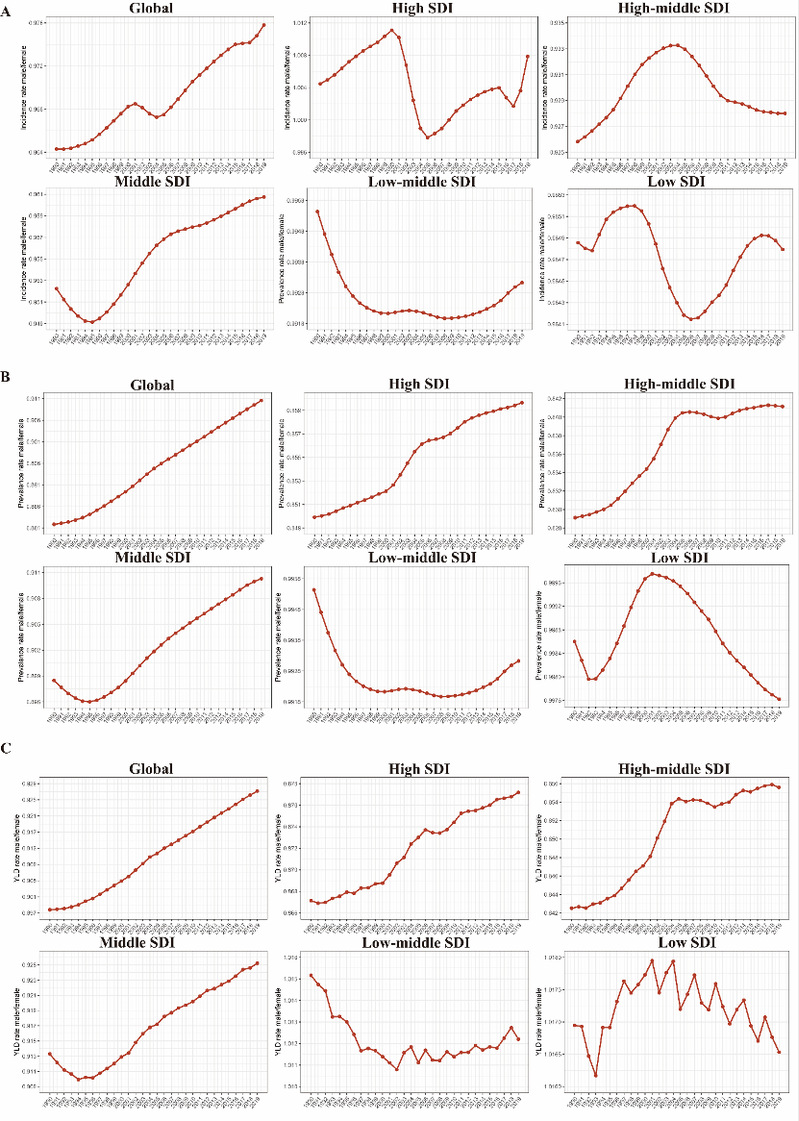Bipolar disorder is a recurrent debilitating mental illness with a complex aetiology. According to the Global Burden of Disease (GBD) Study 2019, the global age-standardized prevalence rate (ASPR) of bipolar disorder has remained consistent between 1990 (ASPR = 490.1 per 100 000 people; 95% uncertainty interval (UI) 411.0–576.5) and 2019 (ASPR = 489.8 per 100 000 people; 95% UI 407.5–580.6).

Fig.1: The global disease burden of bipolar disorder for both sexes in 204 countries and territories.
Recently, Prof. HU Shaohua's team at the First Affiliated Hospital, Zhejiang University School of Medicine (FAHZU) published a research article titled Mapping the global, regional and national burden of bipolar disorder from 1990 to 2019: trend analysis on the Global Burden of Disease Study 2019 in The British Journal of Psychiatry.
This article aimed to provide an overview of trends in bipolar disorder burden from 1990 to 2019. By revisiting the Global Burden of Disease Study 2019, the team analyzed the number of cases, calculated the age-standardized rate (per 100, 000 population) and estimated the annual percentage change (EAPC) of incidence, prevalence and years lived with disability (YLDs) for bipolar disorder from 1990 to 2019. The independent effects of age, period and cohort were estimated by the age–period–cohort modelling.
Globally, the bipolar disorder-related prevalent cases, incident cases and number of YLDs all increased from 1990 to 2019. Regionally, the World Health Organization Region of the Americas accounted for the highest estimated YLD number and rate, with the highest age-standardized prevalence rate in 1990 and 2019 as well as the highest EAPC of prevalence. Across sociodemographic index (SDI) quintiles, all five SDI regions saw an increase in estimated incident cases.

Fig.2: Age, period and cohort effects on incidence, prevalence and years lived with disablity (YLD) rates of bipolar disorder by sex from 1990 and 2019 in those over 10 years of age.
Nationally, New Zealand reported the highest age-standardized rate of incidence, prevalence and YLDs in 1990 and 2019. The most prominent age effect on incidence rate was observed in those aged 15–19 years. Overall, there was a decreased effect of period on the incidence, prevalence, and YLD rates, particularly in females instead of males. The incidence, prevalence and YLD rates showed an unfavourable trend in the younger cohorts born after 1990, with males demonstrating a higher cohort risk than females. From 1990 to 2019, the overall trend of bipolar disorder burden displayed regional and national variations and varied by age, sex, period and cohort.

Fig.3: The ratios of (A) incidence, (B) prevalence, and (C) YLD rate of bipolar disorder worldwide and in different SDI regions from 1990 to 2019.
These findings provide an updated understanding of the burden trends of bipolar disorder over the past three decades at global, regional and national levels, which also highlight remarkable changing trends in different age and sex groups.
More information: The co-corresponding authors of this study are Professor HU Shaohua from the First Affiliated Hospital, Zhejiang University School of Medicine, Researcher SONG Peige from Zhejiang University School of Public Health at, and Professor FANG Yiru from Ruijin Hospital, Shanghai Jiao Tong University. The first authors are Dr. LAI Jianbo, a Distinguished Researcher at FAHZU. And the co-first authors are Master's students LI Shutin from the Class of 2021 at the Zhejiang University School of Public Health, and WEI Chen from the Class of 2022 at FAHZU, are co-first authors.